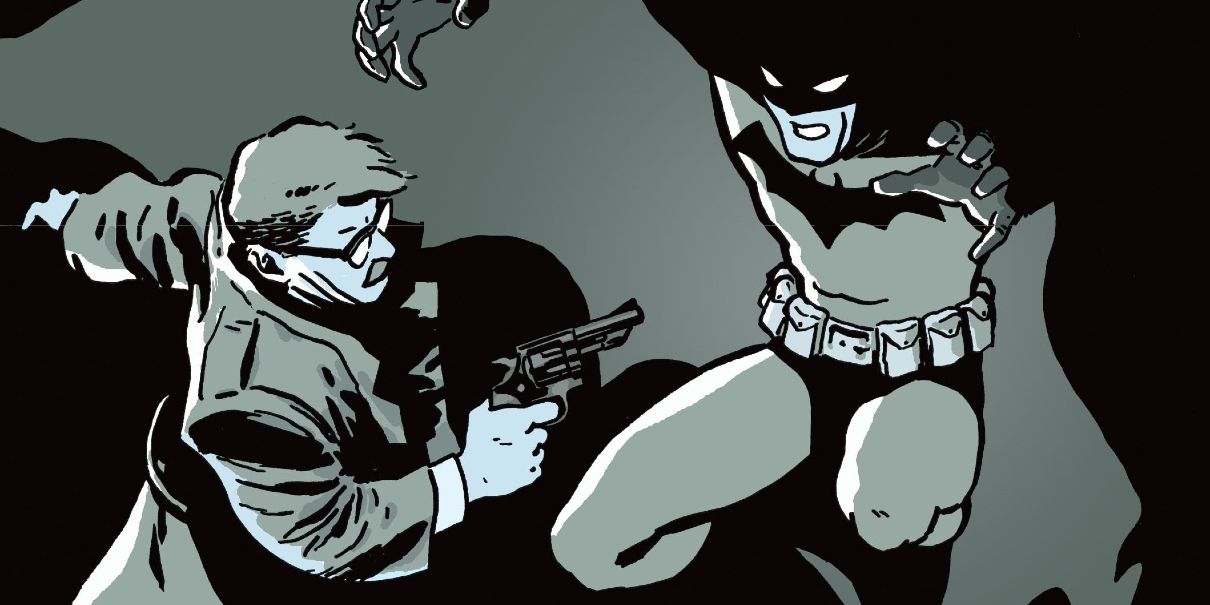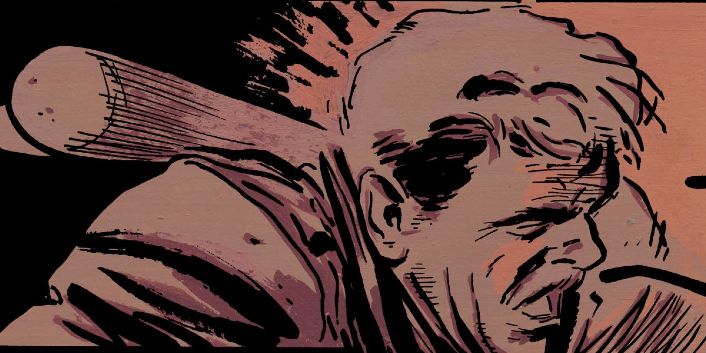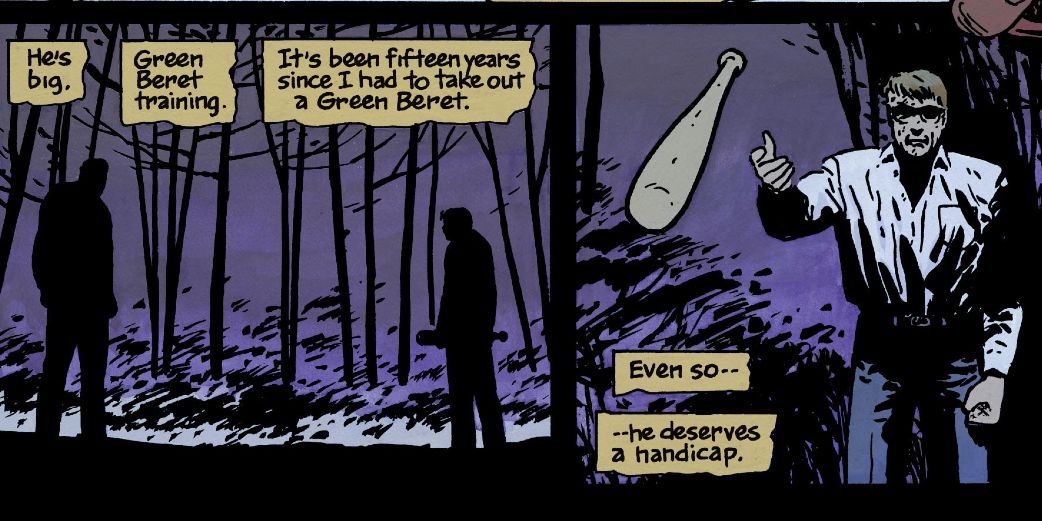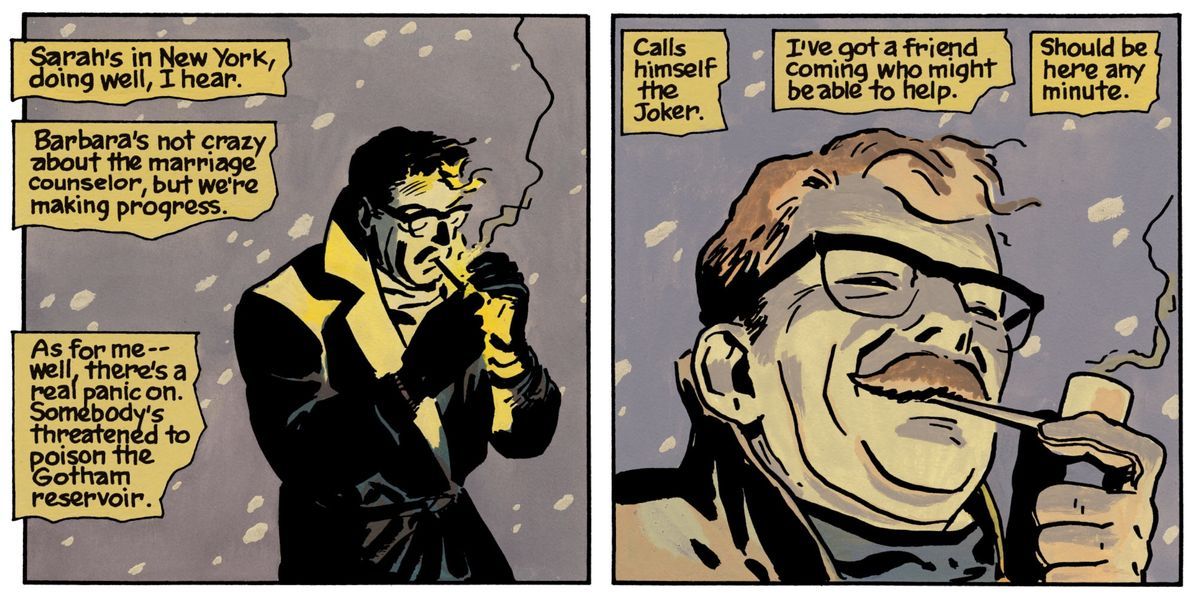Batman: Year One is one of the most seminal Batman stories in his eighty-year publication history. Written by Frank Miller in 1987 with art by David Mazzucchelli and Richmond Lewis, Year One re-envisions Batman's origin story on the seedy streets of Gotham where crime and corruption run rampant. From its bold artwork to its thrilling introduction into several core aspects of Batman's character, Batman: Year One is frequently cited as one of the character's most influential storylines.
Year One depicts a young Bruce Wayne's return to Gotham after several years of living abroad, and his decision to fight crime as Batman. After his first attempt left him battered and bloody, Wayne decided to take on the persona of a bat after one came crashing through the windows of his father's study. His subsequent vigilante activity in Gotham prompted widespread alarm within the police department and city.
But aside from documenting Bruce Wayne's rise as Batman in Gotham, Year One is equally, if not more, concerned with telling the story of future Gotham Police Commissioner James Gordon's arrival into the city. Having transferred to Gotham with his young daughter and pregnant wife, Gordon gets caught up in a web of corruption in Gotham's police department as well as an extra-marital affair with one of his coworkers. It is through Gordon's eyes, not Wayne's, that readers learn about how deeply engrained some of Gotham's problems are.
Batman: Year One easily can more accurately be seen as Commissioner Gordon's origin story, instead of Batman's, because Gordon's storyline sets the stage for Batman's work as a hero. Year One shows that if it were not for the corruption and brutality exhibited by Gotham police, Batman would not exist. Gordon's story shows the need for a figure like Batman in Gotham, because it depicts the pitfalls of official avenues of justice. Batman is then necessary to fill in these judicial gaps and to hold people in power accountable. The corruption that Gordon is privy to on the job explains why a young wealthy man like Bruce Wayne would suit up every night to fight crime.
James Gordon Is As Much The Protagonist As Bruce Wayne.
At its core, Year One is a story about two men confronting the flawed moral reality in their public and private lives. That is, the story shows how Gordon and Wayne react in two different ways to the degeneracy of Gotham, both in terms of systemic issues and their own personal faults. Wayne chooses to address this by becoming Batman, a masked hero, while Gordon is forced to try to bring people within the police department to justice through official channels, with hardly any success. Gordon is an integral part of the story because the difference in his approach to justice contrasts so sharply with Batman's.
More than that, however, Gordon's story centers his private life shortcomings as a father and husband alongside his crusade against the Gotham police, thereby giving him a more substantial character arc than Bruce Wayne. As Gordon gets consumed more and more by his efforts of weeding out corruption in the police, he spends less time with his wife and family, eventually having an affair with Sergeant Essen. A great deal of Gordon's story circulates around the guilt he experiences from having a relationship with Essen while his wife is pregnant. As he spends most of his time fighting for moral accountability within the Gotham police, he is unable to uphold his own basic moral standards in his private life. It is this hypocrisy that Gordon must face within himself, which he reconciles at the end of the story when Wayne saves his infant son from an attack orchestrated to silence his probe into the police force.
James Gordon Confronts The Shortcomings Of Both Gotham And Himself.
It is this dual sense of conflict for Gordon that truly makes Year One his own origin story, because he is forced to reckon with his moral faults in his public and private lives. This double-pronged approach to his character's conflict not only makes him the protagonist, but also provides him with an opportunity for the personal, moral growth necessary for an origin story within the Batman canon. That is, because he is concerned with justice, evident in his later role as Police Commissioner, Gordon must first face lapses in morality both professionally and privately in order to become the version of himself that readers are familiar with. Year One effectively explains the backstory behind Commissioner Gordon on a far deeper level than it does for Batman.
The same cannot be said for Bruce Wayne, because the story is ultimately invested in depicting the fallibility of people in the justice system like James Gordon, instead. Once he debuts as Batman, Bruce Wayne and his private life are hardly seen again in the comic, save for an instance where Gordon visits him at Wayne Manor. On the other hand, after Wayne becomes Batman, the story shifts gears and presents scenes from Gordon's personal life instead, alongside scenes of him on the job. This is evidence of the comic being Gordon's origin story, because it features his character's personal and private life much more prominently than Batman's. And it is through his personal life as a father and husband that Gordon experiences true character growth.
Batman: Year One Is An Origin Story Like No Other.
Superhero origin stories are ways for writers to construct the underlying moral and social contexts surrounding a hero. They often explain the environmental circumstances for why a character does what they do - Gotham is corrupt, Wayne's parents were murdered - as well as delve into the personal, moral stakes that a character has in doing superhero work.
While Year One certainly presents some of the nuts and bolts of Bruce Wayne's journey in becoming Batman, its emotional and moral center ultimately lies in James Gordon's character arc. Gordon goes from being an angst-ridden new-hire, to a cold-blooded avenger taking the law into his own hands against Detective Flass, to a guilt-ridden father and husband involved in an affair, to a newly promoted, self-assured captain confident in marriage counseling and his burgeoning relationship with Batman. By centering Gordon's story within a corrupt police department, writer Frank Miller reveals how the human foundation of Gotham's justice system is vulnerable to temptation. And while Batman himself is not immune to that, he offers Gotham an image of justice without an ulterior motive.




